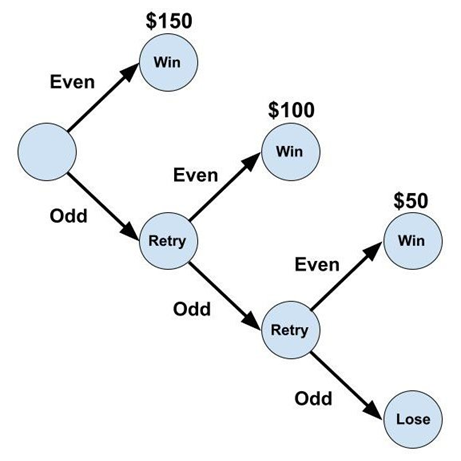Events & Promotions
|
|

GMAT Club Daily Prep
Thank you for using the timer - this advanced tool can estimate your performance and suggest more practice questions. We have subscribed you to Daily Prep Questions via email.
Customized
for You
Track
Your Progress
Practice
Pays
Not interested in getting valuable practice questions and articles delivered to your email? No problem, unsubscribe here.
- Nov 22
11:00 AM IST
-01:00 PM IST
Do RC/MSR passages scare you? e-GMAT is conducting a masterclass to help you learn – Learn effective reading strategies Tackle difficult RC & MSR with confidence Excel in timed test environment - Nov 23
11:00 AM IST
-01:00 PM IST
Attend this free GMAT Algebra Webinar and learn how to master the most challenging Inequalities and Absolute Value problems with ease. - Nov 25
10:00 AM EST
-11:00 AM EST
Prefer video-based learning? The Target Test Prep OnDemand course is a one-of-a-kind video masterclass featuring 400 hours of lecture-style teaching by Scott Woodbury-Stewart, founder of Target Test Prep and one of the most accomplished GMAT instructors.
Dropdown 1: 1/2
Dropdown 2: 7/8
Be sure to select an answer first to save it in the Error Log before revealing the correct answer (OA)!
Difficulty:
 55%
(hard)
55%
(hard)
Question Stats:
25% (01:37) correct 75%
(01:40)
wrong
75%
(01:40)
wrong  based on 847
sessions
based on 847
sessions
History
Date
Time
Result
Not Attempted Yet

A player rolls a fair six-sided die with faces numbered 1 through 6. If the result is even, the player wins a prize and does not roll again. If the result is odd, the player rolls again. The player may roll the die up to three times in total, but stops immediately upon getting an even number. The diagram shows the outcomes and the corresponding prize amounts.
From each drop-down menu, select the option that creates the most accurate statement based on the information provided.
The probability that the player wins $150 is and the probability that the player wins at least $50 is .
ShowHide Answer
Official Answer
Dropdown 1: 1/2
Dropdown 2: 7/8
Kudos
Bookmarks
Official Solution:
For a player to win exactly $150, they must roll an even number on the first roll. The probability of this is \(\frac{1}{2}\).
To win at least $50, the player must avoid losing entirely. The only way to lose is by rolling an odd number on all three attempts, which has a probability of \((\frac{1}{2})^3 = \frac{1}{8}\). Therefore, the probability of winning at least $50 is \(1 - \frac{1}{8} = \frac{7}{8}\).
Correct answer:
Dropdown 1: "1/2"
Dropdown 2: "7/8"
Bunuel
For a player to win exactly $150, they must roll an even number on the first roll. The probability of this is \(\frac{1}{2}\).
To win at least $50, the player must avoid losing entirely. The only way to lose is by rolling an odd number on all three attempts, which has a probability of \((\frac{1}{2})^3 = \frac{1}{8}\). Therefore, the probability of winning at least $50 is \(1 - \frac{1}{8} = \frac{7}{8}\).
Correct answer:
Dropdown 1: "1/2"
Dropdown 2: "7/8"
General Discussion
Kudos
Bookmarks
1. Probability to win $150
= 1/2
Since probability to get 150 in the first attempt is 1/2 [The question stem mentions that he is allowed to throw the dice three times or until he wins, whichever is earliest]
2. Probability to win at least $50 is
= 1/2 + (1/2 * 1/2) + (1/2 * 1/2 * 1/2)
= 1/2 + 1/4 + 1/8
= 7/8
He can win any of the three scenarios!
= 1/2
Since probability to get 150 in the first attempt is 1/2 [The question stem mentions that he is allowed to throw the dice three times or until he wins, whichever is earliest]
2. Probability to win at least $50 is
= 1/2 + (1/2 * 1/2) + (1/2 * 1/2 * 1/2)
= 1/2 + 1/4 + 1/8
= 7/8
He can win any of the three scenarios!










